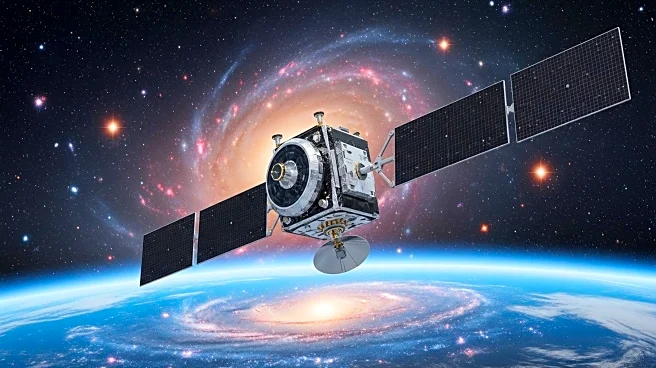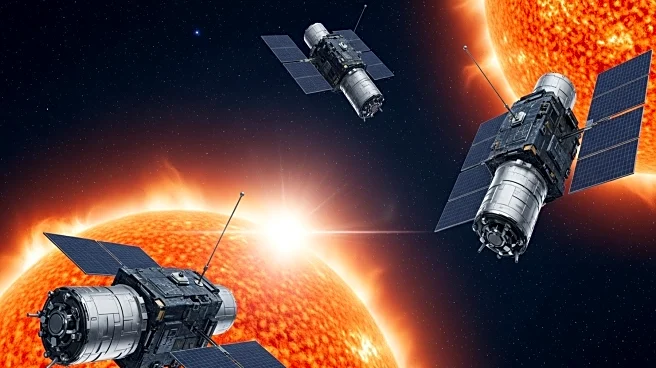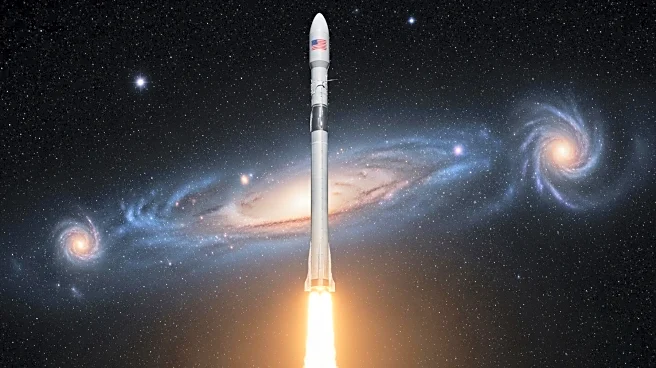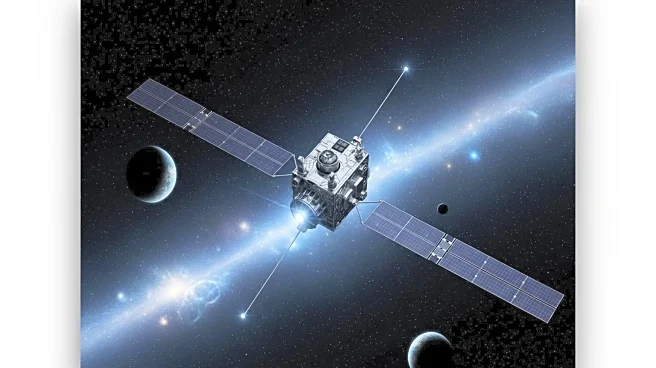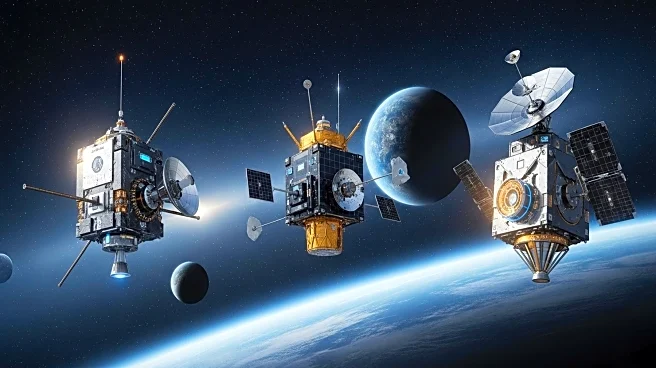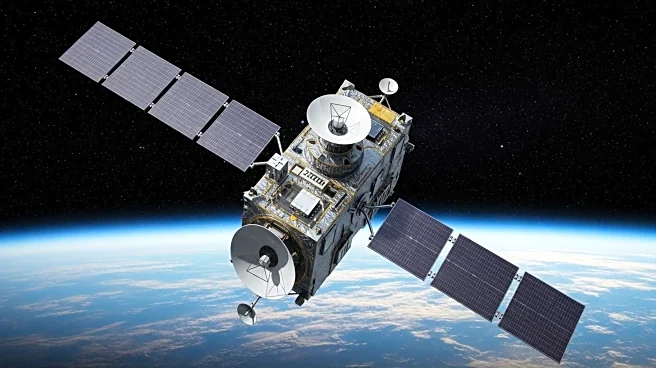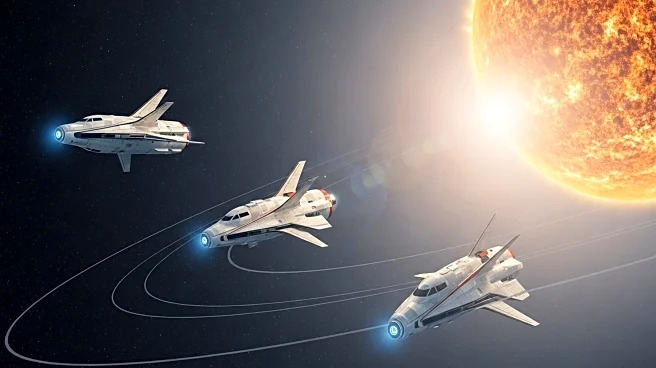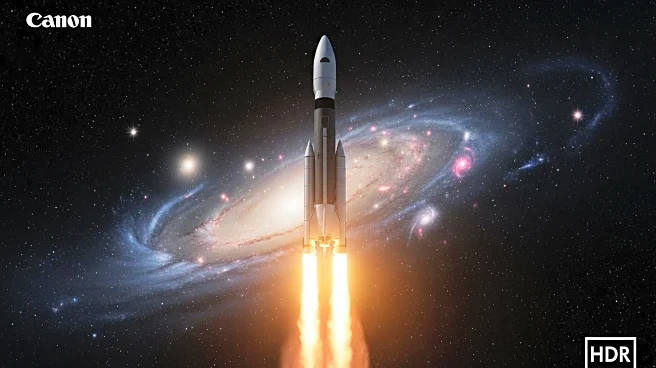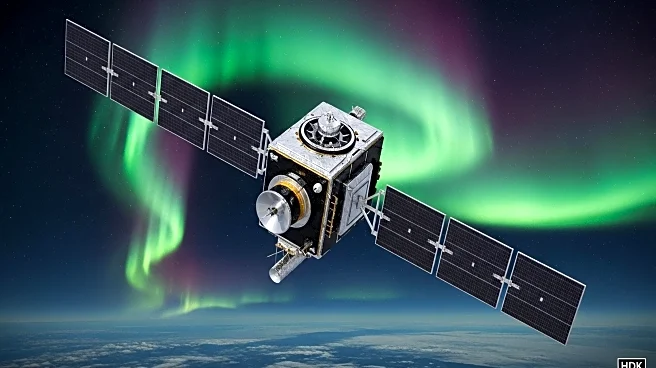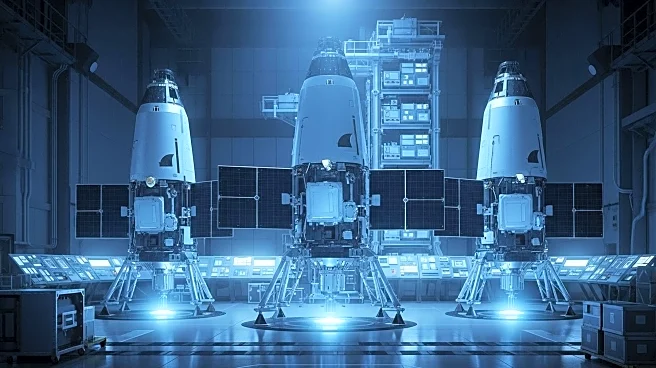What's Happening?
SpaceX's Falcon 9 rocket has successfully launched three missions for NASA and the National Oceanic and Atmospheric Administration (NOAA) to study solar activity and space weather. The launch took place from Kennedy Space Center in Florida, deploying NASA's Interstellar Mapping and Acceleration Probe (IMAP), Carruthers Geocorona Observatory, and NOAA's Space Weather Follow On-Lagrange 1 (SWFO-L1). These spacecraft will travel to Lagrange point 1, located about a million miles from Earth, to conduct instrument checks and calibrations before commencing their missions. IMAP will map the heliosphere's boundaries, while the Carruthers Observatory will study changes in the Earth's exosphere during solar storms. SWFO-L1 will provide real-time space weather data to help forecasters predict events that could impact critical infrastructure.
Why It's Important?
The launch of these missions is significant for understanding the impact of solar activity on the solar system and Earth's environment. By mapping the heliosphere and monitoring space weather, scientists can better predict and mitigate the effects of solar storms on technology and infrastructure. This research is crucial for protecting satellites, power grids, and communication systems from disruptions caused by space weather events. The collaboration between NASA and NOAA underscores the importance of interagency efforts in advancing space science and ensuring the resilience of critical systems against natural phenomena.
What's Next?
Over the coming months, the spacecraft will reach their designated positions at Lagrange point 1 and begin their scientific missions. NASA and NOAA will analyze the data collected to improve space weather forecasting and develop strategies to protect infrastructure from solar activity. The findings from these missions could lead to advancements in space weather prediction models and enhance the ability to safeguard technology-dependent systems. Continued collaboration between government agencies and private companies like SpaceX will be essential for future space exploration and research initiatives.
Beyond the Headlines
The study of solar activity and space weather has broader implications for understanding the universe and the forces that shape it. As scientists gain insights into the heliosphere and its protective role, they can explore the potential for life beyond Earth and the conditions necessary for sustaining it. The missions also highlight the growing role of private companies in space exploration, as SpaceX continues to support scientific endeavors alongside commercial ventures. This trend may lead to increased investment in space research and innovation, driving technological advancements and expanding humanity's reach into the cosmos.

